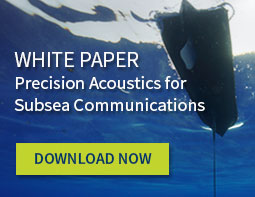The New Economics of Marine Environmental Monitoring
Liquid Robotics — March 16, 2017
The idea of widespread, persistent environmental monitoring in the ocean is generally written off as being prohibitively expensive and too complex. And using traditional instruments and approaches, it is. It should come as no surprise that technology is helping us change the answer to this question. Advances in technology and the progress of unmanned systems and sensors are rapidly changing the economics of marine environmental monitoring.
The next step we face in this journey is gaining wider recognition and adoption of these new technologies. When you can cut the cost of monitoring an area of the ocean by as much as 50x, by replacing the trip a boat might make with an unmanned vehicle, then both regulators and commercial entities start to think differently about the role of environmental assessment reports and monitoring.
This isn’t a vision of the future. Unmanned ocean systems are already demonstrating their value across academic, government, and commercial sectors. They are moving from the realm of experimental to a more operational role. Some recent examples where these systems have shown their value include:
- Persistent hydrocarbon monitoring
- Lower cost fish stock assessment
- Coordinated and mobile ocean monitoring
What is the difference today, versus ten years ago? Clearly, a lot of work and progress has occurred over the last two decades to develop an entire ecosystem of autonomous maritime systems, from subsea sensors, to underwater vehicles, to smart buoys and unmanned surface vehicles. These systems have been deployed all over the world to help us better understand how the ocean environment and to advance both commercial and scientific activities.
Today, we see a maturation of both technology and applications. We also see some systems, such as unmanned surface vehicles, playing a unique role in the ecosystem by acting as a communication gateway that links together other systems, sensors and assets. It used to be hard and expensive to get data from a sensor 4000 meters below the water. Today, it’s much easier and less expensive.
So how much easier can this get and where has it been done? Our new white paper explores this question. Download it today to learn more about how unmanned systems are working with traditional ones to change the economics of marine environmental monitoring.
